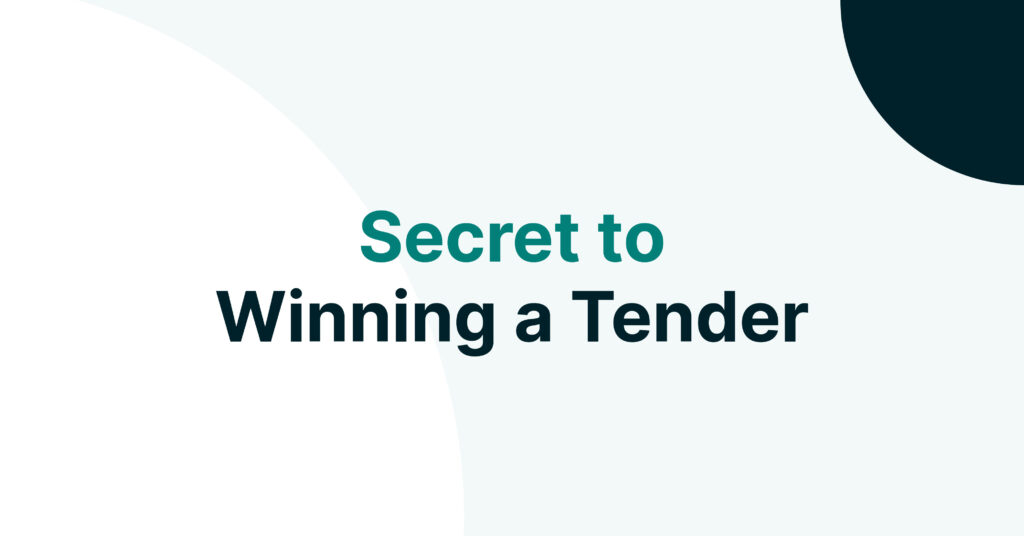How to bid for a tender: starting with knowledge
Learn how to bid for a tender – starting with what you already know
It’s hard to know where to start when you bid for a tender. The whole process can seem a little daunting or confusing. There’s so much to learn and it can be easy to get it wrong. At Tender VLE, we are here to help with the very basics and beyond. Follow this guide on how to bid for a tender: starting with knowledge.
The starting point before bidding for a tender is to understand what tendering is. Tendering is the process of an organisation procuring goods/services. They invite other parties to bid for the work as suppliers. This invitation is known as a Request for Tender (RFT). The company that publishes the request and needs the goods/services is called the buyer. The company that responds to that request is known as the Supplier.
Now you’ve understood what tendering is, now ask yourself, “Why do we have to bid for a tender?”
You bid for a tender as it gives you the opportunity to stand out against your competitors. It demonstrates why you are the right company to deliver the contract.
Obtain the tender document
Once you’ve found a tender you’d like to win, obtain the tender documents (usually from a relevant website) quickly. It is worth checking if there is a compulsory briefing meeting. If you miss this meeting, you may be disqualified from bidding on the tender.
Read the terms and conditions
This is one of the most important things when you to learn on how to bid for a tender. Make sure you read the terms and conditions of the tender document carefully and understand it thoroughly. Read the tender document from beginning to end. Be sure to complete the tender documents carefully and attach any required supporting documents.
To bid or not to bid?
Many factors may impact on your decision whether to bid or not for a contract. Follow the below checklist to help decide if a tender is worth bidding on:
- 3 cases studies – similar in scope, scale and value.
- Is it financially viable? Would you be making a profit?
- Do you meet the financial standing?
- Do you offer something unique in the market? What are the unique selling points of your business? What do you do that your competitors don’t?
- Does this fit in with a long-term strategy? Does this fit with the key targets for your company?
- Do you need to outsource any work, if so, then how much?
- Does your company have the ability to deliver the project?
- Most importantly, do you have time to commit to this?
Breaking down the question
The most effective technique when bidding for a tender is breaking down the question and arranging it into sub-categories. If you don’t break down the question it makes it harder to answer. Once you have your sub-categories in order you are able to start writing your answer.
-
Sub-headings
For example, if a question has 10 points to it, use 10 sub-headings to cover each point of the question. By breaking the tender down into manageable chunks, it makes answering the question easier.
-
Consider every point of the question
Again, breaking down the question will help you consider each point of the question. This will help you write a coherent and informative answer and will demonstrate you have fully understood the question.
Write a compelling bid
Prepare your bid response, if you want to win a bid, you must put time and effort into it. Your answer should be clear and concise and cover all the points asked of you. You should create an in-depth plan of what your response will include and follow a clear structure. When planning your answer, think about the following:
- How much will it cost to prepare the bid?
- What resources will you need to fulfil the contract?
- Who will manage the bid?
- Who is your competition?
- What is your chance of winning?
- What information do you need?
Presentation skills
Still asking yourself, how do I bid on a tender? Think about your presentation, it’s a key element in bidding. Using overly complicated information will reduce your chances of winning the bid. Presentation skills are key to being successful, some useful tips include:
- Use sequencing and coherent theme
- Make your presentation as simple and attractive as possible
- Use simple vocabulary
- Use excellent graphical representation.
Submit before the deadline
If you don’t submit before the closing date, you’ll be disqualified. Make sure you submit the tender well ahead of time to avoid any disappointment. If you submit the tender after the closing date it will not be read by the tender officials.
Confirm your tender documents have been received
When you submit your tender via a portal submission, you will often come to a confirmation screen. It’s worth taking a screenshot or making an email folder if you receive a confirmation email. This will save you a whole lot of worry.
Checking your bid
Be sure your bid meets the requirements, after all if you bid for a tender, you’re bidding to win. Tenders often do not win due to:
- Failing to answer the specific questions
- Poor planning
- An insufficient level of detail
- Failing to address the full specification.
Proofing is important before you decide to submit your bid. It’s one of the basic skills to acquire when learning how to bid for a tender. You don’t want to submit a tender that is full of bad grammar, spelling mistakes or content that doesn’t flow. Poor proofreading skills will reflect badly on your business, and you could lose the bid.
Still looking for support?
So, you’ve learnt all you need to know about how to bid for a tender. It’s a lot to take in and you might need more support.
Here at Tender VLE we want to help you as much as possible when you bid for a tender. We pride ourselves on providing you with information and guidance, so you have the best chance of winning your bid.
If you’re still unsure about how to bid for a tender, you can contact us for additional support.








